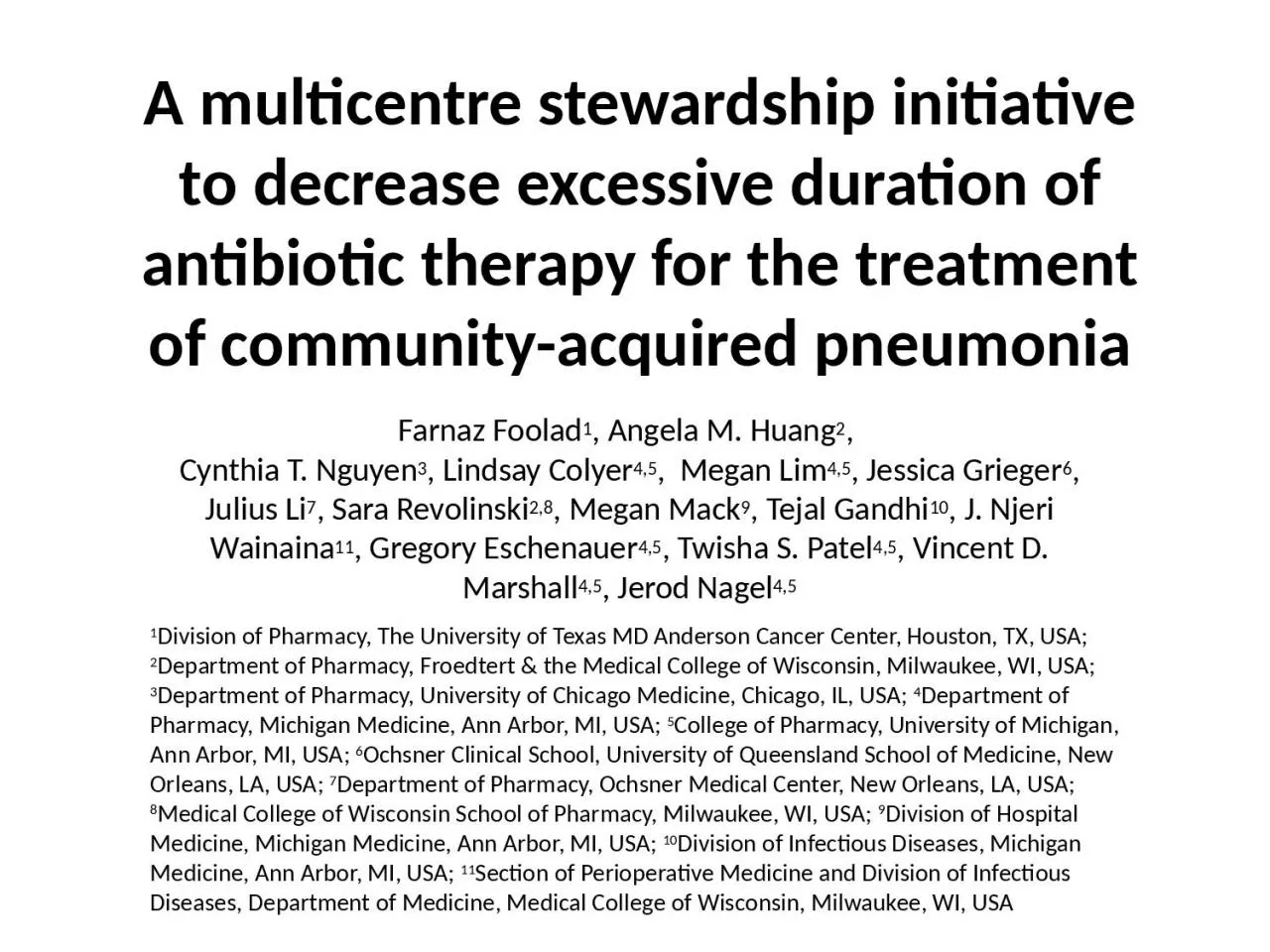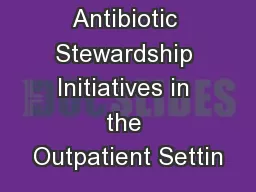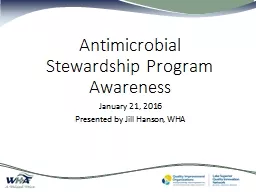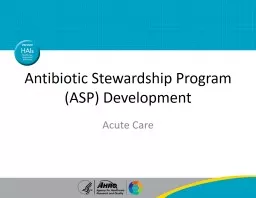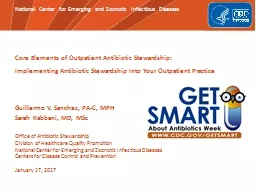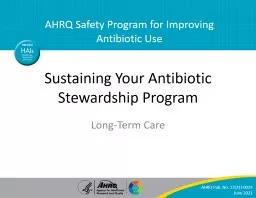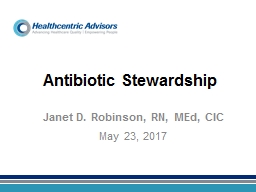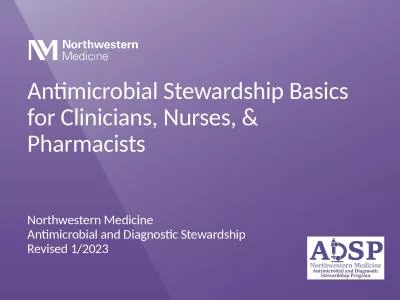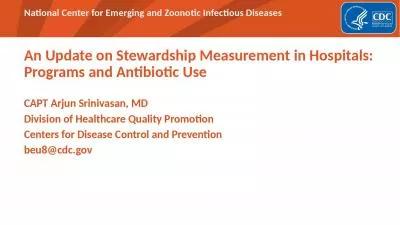PPT-A multicentre stewardship initiative to decrease excessive duration of antibiotic therapy
Author : hailey | Published Date : 2024-01-03
Farnaz Foolad 1 Angela M Huang 2 Cynthia T Nguyen 3 Lindsay Colyer 45 Megan Lim 45 Jessica Grieger 6 Julius Li 7 Sara Revolinski 28 Megan Mack 9 Tejal
Presentation Embed Code
Download Presentation
Download Presentation The PPT/PDF document "A multicentre stewardship initiative t..." is the property of its rightful owner. Permission is granted to download and print the materials on this website for personal, non-commercial use only, and to display it on your personal computer provided you do not modify the materials and that you retain all copyright notices contained in the materials. By downloading content from our website, you accept the terms of this agreement.
A multicentre stewardship initiative to decrease excessive duration of antibiotic therapy: Transcript
Download Rules Of Document
"A multicentre stewardship initiative to decrease excessive duration of antibiotic therapy"The content belongs to its owner. You may download and print it for personal use, without modification, and keep all copyright notices. By downloading, you agree to these terms.
Related Documents

